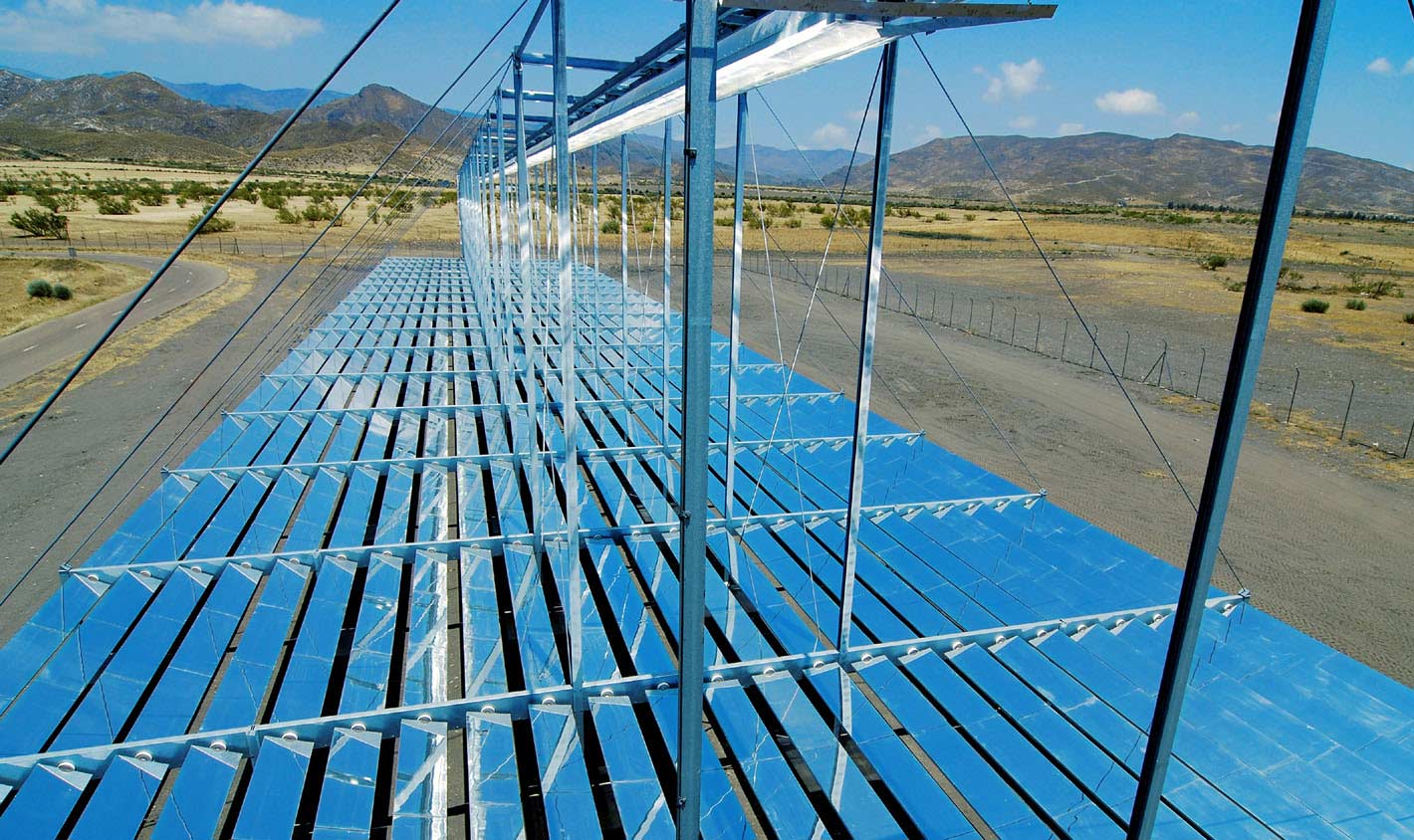Sunshine is guaranteed at Almería in southern Spain – an ideal location for generating solar thermal energy. A test installation was inaugurated there on July 9, 2007, that operates with a linear Fresnel reflector one hundred meters long. Research scientists from the Fraunhofer Institute for Solar Energy Systems ISE in Freiburg have helped to develop the technology.
Freiburg have helped to develop the technology.
Not only are fossil energy sources dwindling, but burning them produces greenhouse gases. “That’s why we must look to regenerative energies in future,” states Professor Eicke Weber, director of the Fraunhofer Institute for Solar Energy Systems ISE in Freiburg. “We anticipate that half the global energy requirement will be met from sustainable sources such as wind, water and solar power by 2050.”
The most important source of energy will always be the sun: The amount of solar energy that reaches Earth in a single hour is theoretically sufficient to supply the whole of humanity for a year. All we need to do is harness it – but even today, that still poses a tremendous technical challenge. In sunny countries, it is worthwhile building large-scale solar thermal power plants in whose solar fields thermo-oil is heated. A heat exchanger is used to create steam that drives a turbine to generate electricity. Up to now, engineers have used gigantic parabolic mirrors that focus the sunlight on a central absorber tube. Fresnel reflectors represent a low-cost alternative. Flat mirrors arrayed in long rows are so aligned that, with the aid of a small secondary mirror, they focus the sunlight on a linear tube running along the row of mirrors. Water is vaporized directly in this tube and heated up to 450 degrees Celsius at high pressure. “Linear Fresnel reflectors are cheaper than parabolic mirrors, take up less space and are less sensitive to the wind,” states Weber. In his opinion, this means the technology has a good chance of gaining wide-scale market acceptance.
The demonstration plant in Almería was designed by Weber’s team in collaboration with other prestigious research groups, including scientists from the DLR, under a contract to MAN Ferrostaal Power Industry GmbH. The plant’s inauguration marks the beginning of comprehensive practical tests. If the linear Fresnel reflectors pass muster, they can be used in the construction of commercial solar thermal power plants.

